Arizona Purchaser Dwelling Actions Are Subject to a New Construction
September 04, 2019 —
William L. Doerler - The Subrogation StrategistArizona recently amended its Purchaser Dwelling Action statute to, among other things, involve all contractors in the process, establish the parties’ burdens of proof, add an attorney fees provision, establish procedural requirements and limit a subcontractor’s indemnity exposure. The governor signed the bill—2019 Ariz. SB 1271—on April 10, 2019, and the changes go into effect and apply, retroactively “to from and after June 30, 2019.” The following discussion details some of the changes to the law.
Notice to Contractors and Proportional Liability
Under the revised law, a “Seller” who receives notice of a Purchaser Dwelling Action (PDA) from a residential dwelling purchaser pursuant to A.R.S. § 12-1363* has to promptly forward the notice to all construction professionals—i.e. architects, contractors, subcontractors, etc., as defined in A.R.S. § 12-1361(5)—that the Seller reasonably believes are responsible for an alleged construction defect. A.R.S. § 12-1363(A). Sellers can deliver the notice by electronic means. Once construction professionals are placed on notice, they have the same right to inspect, test and repair the property as the Seller originally placed on notice. A.R.S. § 12-1362(B), (C).
To the extent that the matter ultimately goes to suit, A.R.S. § 12-1632(D) dictates that, subject to Arizona Rules of Court, construction professionals “shall be joined as third-party defendants.” To establish liability, the purchaser has the burden of proving the existence of a construction defect and the amount of damages. Thereafter, the trier of fact determines each defendant’s or third-party defendant’s relative degree of fault and allocates the pro rata share of liability to each based on their relative degree of fault. However, the seller, not the purchaser, has the burden of proving the pro rata share of liability for any third-party defendant. A.R.S. § 12-1632(D).
Read the court decisionRead the full story...Reprinted courtesy of
William L. Doerler, White and Williams LLPMr. Doerler may be contacted at
doerlerw@whiteandwilliams.com
Real Estate & Construction News Roundup (6/4/24) – New CRE Litmus Tests, Tech Integration in Real Estate and a Jump in Investor Home Purchases
July 02, 2024 —
Pillsbury's Construction & Real Estate Law Team - Gravel2Gavel Construction & Real Estate Law BlogIn our latest roundup, big bank exposure to CRE lending grows, concerns for the construction industry abound, U.S. hotel securitized loans come due, and more!
Read the court decisionRead the full story...Reprinted courtesy of
Pillsbury's Construction & Real Estate Law Team
Nevada Supreme Court to Decide Fate of Harmon Towers
June 28, 2013 —
CDJ STAFFThe Nevada Supreme Court started hearings on Tuesday, June 4 over the fate of Harmon towers. MGM Resorts is hoping to obtain permission from the court to tear down the tower, which they claim could collapse should an earthquake strike Las Vegas. Perini Corp, the builder, wants the building to remain standing in order to support their claim that the building’s flaws are through design and not construction errors.
KLAS quoted one of Perini’s lawyers claiming that MGM had pursued a media strategy to prejudice potential jurors against the contractor. “CityCenter hired Cedric and Bunting to place advertisements with the media to win the hearts and minds of the community and to convince the public pretrial that Perini was, quote, ‘scum of the earth.’”
If the Supreme Court gives the go-ahead, demolition would begin soon. Still pending, is the $500 lawsuit over the allegations of construction defects.
Read the court decisionRead the full story...Reprinted courtesy of
The Golden State Commits to Going Green – Why Contractors Will be in High Demand to Build the State’s Infrastructure
November 28, 2018 —
Karla Pascarella & Alexa Magrath - Peckar & Abramson, P.C.On September 10, 2018 California’s Governor took an ambitious stance on environmental policy and signed Senate Bill 100 (“SB100”). The bill accelerates several Renewables Portfolio Standards (“RPS”) deadlines previously established by former Governor Arnold Schwarzenegger. The bill’s most notable effect—it requires that 100 percent of California’s electricity come from renewable and zero-carbon sources by 2045. California is the second state in the nation to pass such legislation; Hawaii passed a similar bill in 2015.
The passage of this bill could not be timelier as wildfires, drought, and record high temperatures continue to make national headlines. California, as it often does, has taken a contrarian position as the federal government attempts to reinvigorate the coal mining industry in America. Coal and other fossil fuels used to produce energy increase air pollution and deplete necessary ozone. California has been experimenting and utilizing renewable energy technology since as early as 1997. According to the California Energy Commission, by the end of 2017 California generated approximately 32 percent of its energy from renewable sources.
Reprinted courtesy of
Karla Pascarella, Peckar & Abramson, P.C. and
Alexa Magrath, Peckar & Abramson, P.C.
Ms. Pascarella may be contacted at kpascarella@pecklaw.com
Ms. Magrath may be contacted at amagrath@pecklaw.com
Read the court decisionRead the full story...Reprinted courtesy of
Seattle’s Tallest Tower Said Readying to Go On the Market
March 12, 2015 —
Hui-yong Yu – Bloomberg(Bloomberg) -- Seattle’s Columbia Center, the curved black office tower that’s the city’s tallest building, is poised to go on the market as its owners seek to tap into robust demand for U.S. real estate.
Beacon Capital Partners, a Boston-based private-equity real estate company, is working with Eastdil Secured LLC on the sale of the 76-story Columbia Center, the second-tallest U.S. building west of Chicago, according to a person with knowledge of the matter. Formal marketing is likely to begin in coming months, said the person, who asked not to be identified because the process is private.
Read the court decisionRead the full story...Reprinted courtesy of
Hui-yong Yu, BloombergMs. Yu may be contacted at
hyu@bloomberg.net
Professional Liability and Attorney-Client Privilege Bulletin: Intra-Law Firm Communications
January 07, 2015 —
David W. Evans & Stephen J. Squillario – Haight Brown & Bonesteel LLPAttorney-Client Privilege Protects Confidential Communications Between Law Firm Attorney Representing Current Client and Firm’s General Counsel Regarding Disputes with Client Who Later Files Malpractice Suit
In a case of first impression in California, Edwards Wildman Palmer LLP v. Superior Court (No. B255182 - filed November 25, 2014), Division Three of the Second District Court of Appeal addressed the question of whether the attorney-client privilege applies to intrafirm communications between law firm attorneys concerning disputes with a current client, when that client later sues the firm for malpractice and seeks to compel production of such communications. The court concluded that when an attorney representing a current client seeks legal advice from the law firm’s designated in-house “general counsel” concerning disputes with the client, the attorney-client privilege applies to their confidential communications. The court held that adoption of the so-called “fiduciary” or “current client” exceptions to the attorney-client privilege is contrary to California law because California courts are precluded from creating implied exceptions to the statutorily created attorney-client privilege.
Reprinted courtesy of
David W. Evans, Haight Brown & Bonesteel LLP and
Stephen J. Squillario, Haight Brown & Bonesteel LLP
Mr. Evans may be contacted at devans@hbblaw.com; Mr. Squillario may be contacted at ssquillario@hbblaw.com
Read the court decisionRead the full story...Reprinted courtesy of
20 Years of BHA at West Coast Casualty's CD Seminar: Chronicling BHA's Innovative Exhibits
May 03, 2018 —
Beverley BevenFlorez-CDJ STAFFThe Bert L. Howe & Associates, Inc., (BHA) exhibit has been a fixture at West Coast Casualty's Construction Defect Seminar since the mid-1990's. Through the years, BHA has updated their display, but no matter what year, you could count on the BHA exhibit to provide a not-to-be-missed experience.
2008-BHA's sleek, rear projection display includes a screen that promotes the firm's capabilities that can be seen throughout the exhibit hall. This would be one of many innovations BHA has brought to the West Coast Casualty seminar.
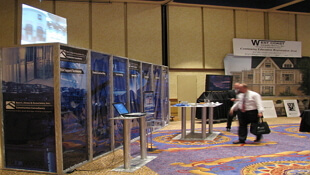
2009-With the success of the rear screen projection, BHA adds additional monitors to provide attendees with more information about BHA.
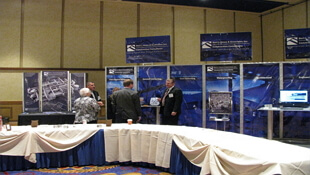
2010-BHA adds an interpretive professional development exhibit targeted to Building Envelope issues allowing adjusters and other non-construction professionals hands on access to the systems and components at the heart of many related such claims.


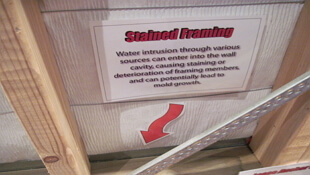
2011-BHA's Swing for Charity challenge is born.

2012-Always innovating, BHA expands its rear projection and professional development offerings to West Coast attendees.

2013-BHA showcases additional capabilities with a twenty-four foot, custom, convex, immersive video experience.

2014-BHA adds an iPhone display to give a hands-on demonstration of their data collection methods.
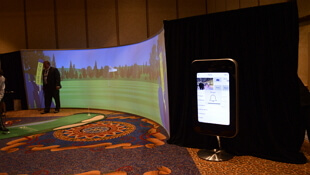
2015-BHA's twenty-four foot , custom, convex, immersive video experience was elevated with two additional rear projection screens, reflecting BHA's newest capabilities and services.

2016-BHA dazzles attendees with their new exhibit comprised of more than 15 integrated, high definition, LCD displays. iPads are stationed on tables to conveniently demonstrate BHA's data collection processes.
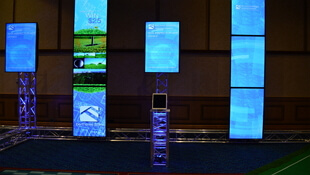
2017-BHA's Swing for Charity Golf Challenge raised $2,225.00 for the National Coalition for Homeless Veterans and $1,900 for Final Salute.
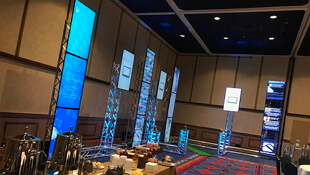
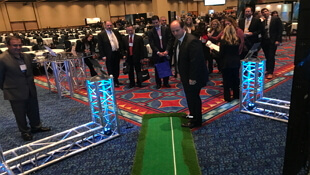
Read the court decisionRead the full story...Reprinted courtesy of
New York Instructs Property Carriers to Advise Insureds on Business Interruption Coverage
April 13, 2020 —
Tred R. Eyerly - Insurance Law HawaiiThe New York Department of Financial Services (DFS) took the unusual step last week of instructing all property/casualty insurers to provide information on commercial property insurance and details on business interruption coverage in light of the COVID-19 outbreak. The notice is
here.
The notice recognizes that policyholders have urgent questions about the business interruption coverage under their policies. Insurers must explain to policyholders the benefits under their policies and the protections provided in connection with COVID-19.
The explanation to policyholders is to include the following relevant information.
What type of commercial property insurance or otherwise related insurance policy does
the insured hold?
Does the insured's policy provide "business interruption" coverage? If so, provide the
"covered perils" under such policy. Please also indicate whether the policy contains a
requirement for "physical damage or loss" and explain whether contamination related
to a pandemic may constitute "physical damage or loss." Please describe what type of
damage or loss is sufficient for coverage under the policy.
Read the court decisionRead the full story...Reprinted courtesy of
Tred R. Eyerly, Damon Key Leong Kupchak HastertMr. Eyerly may be contacted at
te@hawaiilawyer.com




































































